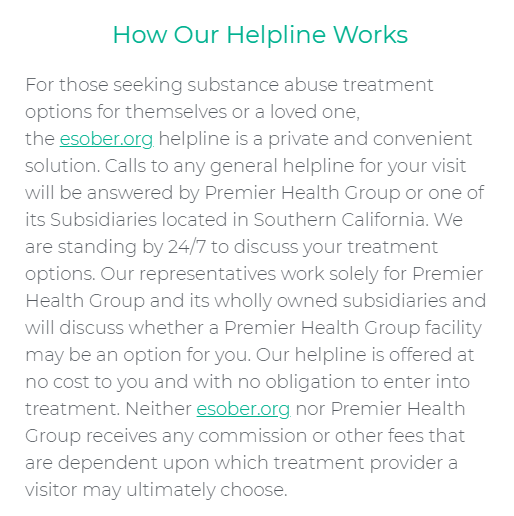Gabapentin is not typically a drug that leads to abuse. In fact, it is not listed as a controlled substance in the US. This is because, unlike opioids and benzodiazepines, it does not seem to affect the receptors manipulated by common drugs. However, users tend to develop drug dependence with it because of its properties similar to many commonly abused intoxicants.
Gabapentin is an anticonvulsant medication that comes in white, yellow, and orange capsules and tablets. It is most commonly used to treat epilepsy, postherpetic neuralgia pain, hot flashes, and restless leg syndrome. It is also considered as alternative medication for non-FDA-approved uses, such as for fibromyalgia, neuropathic pain, and alcohol dependence.
How Does Its “High” Feel Like?
Gabapentin is a prescription-only medicine, but it is always available via the illegal drugs market and known in street names as morontin and gabbies. While capsules and tablets are also normally swallowed, some reports show that the powder from Gabapentin capsules is being snorted.
Gabapentin has the strength of a mild tranquilizer which produces a euphoric high similar to the high produced by marijuana. It also produces feelings of calmness and relaxation leading to increased sociability.
Users who abuse Gabapentin commonly mix it with other substances or intoxicants, like heroin and other opioids, to increase the effects of the drug. The effects of Gabapentin abuse might sound harmless, but the problem is amplified when it is mixed with other substances. This is because it increases the lethality or potency of all combined substances. The medication may also be misused by those attempting to reduce the symptoms of withdrawal from substances like alcohol.
What Are Its Side Effects?
It’s essential to consider whether the user taking Gabapentin has a prescription or not. If you suspect someone is misusing or abusing Gabapentin, you can watch out for these side effects:
- Anxiety
- Depression
- Dizziness
- Double vision
- Fever
- Difficulty speaking
- Drowsiness
- Memory loss
- Loss of coordination
- Tremors
- Jerky movements
- Unusual eye movements
What Are the Signs of Addiction to Gabapentin?
If a user is taking Gabapentin with a prescription, then the drug’s side effects are not necessarily a sign of abuse. In reality, there are signs to determine if a person is dealing with addiction to prescription medication. Here are some of them:
- Unease at the thought of missing a dosage
- Lying or exaggerating symptoms to doctors
- Seeking multiple doctors to get extra doses
- Switching doctors after the original doctor refuses to continue prescribing the medication
- Changes in social habits or circles
- Changes in grooming and hygiene habits
- Failed attempts to quit
- Refusal to quit taking the medication despite consequences
What Happens When a Person Becomes Physically Dependent on Gabapentin?
A user develops tolerance to Gabapentin when they need higher and higher doses of it to attain the effects achieved at lower doses. Eventually, a person can become physically dependent on the drug.
The physical dependence on a drug occurs when the body adapts to a medication. Once an individual stops or decreases the use of Gabapentin, they will experience unpleasant withdrawal symptoms.

Withdrawing from substances like drugs and alcohol can be life-threatening. In the case of Gabapentin, there are cases of individuals reporting withdrawal symptoms after suddenly stopping taking the drug.
Gabapentin Drug Interactions
Patients who have Gabapentin as a prescription medication must be aware of any possible drug interactions. Here are several drugs that interact with Gabapentin:
- Hydrocodone
- Valerian
- Aluminum hydroxide
- Calcium carbonate
- Clobazam
- Lurasidone
- Morphine
- Orlistat
- Sevelamer
- Sodium bicarbonate
- Sodium citrate
Before using Gabapentin, it’s best to tell your doctor or pharmacist of all the medications you take. This will prevent the drugs from causing any negative interactions with one another.
How Long Does the Drug Stay in the System?
Gabapentin comes in two versions: immediate-release and extended-release. In addition, its half-life in most people will range from 5-7 hours. This means it will usually take 5-7 hours for your system to break the drug down to half of its original concentration in your bloodstream.
Although the liver is responsible for breaking down most of the substances in your system, that isn’t the case when you take Gabapentin. This is because it is one of the few drugs that is metabolized by the kidneys. Because of this unique process, this drug does not remain in your body for a long time.
This prescription medication would be totally eliminated from your system after a span of 5-8 half-lives. For instance, if the average half-life of Gabapentin is about seven hours in most people, it would take around 48 hours for the drug to be totally eliminated from their system. However, it’s worth noting that other factors can affect this process. For example, if you take extended-release versions of Gabapentin, the detectability of the drug would be much longer since it would continue to release the drug in increments over time.
How Is It Detected in the Body?
At present, general drug screens usually do not test for the presence of Gabapentin. However, the substance can be detected if the test was specifically conducted to look for the drug.
If you are taking a blood test, the detectability of Gabapentin will range from 5-7 hours. For urinalysis, Gabapentin is detectable for up to three days in most individuals. This makes it the most common method to test for Gabapentin. On the other hand, hair tests might be able to specifically detect the presence of Gabapentin for up to 90 days. Meanwhile, it is undetectable in saliva swab tests.
The way Gabapentin is metabolized is different from other drugs. Because of this, the dosage may have less of an effect on the length of time this medication remains in your system. Regardless, taking very high doses of it leads to longer elimination times for the drug.
Other factors that can affect its rate of elimination from the body are age, kidney function, and body mass index or weight. Hydration could also speed up the process of drug elimination from your system because the drug is primarily metabolized in the kidneys and expelled through urination.
What Are the Withdrawal Symptoms?
Withdrawal symptoms after a complete stop of all use of a drug are a sign of addiction. This takes place when tolerance to the drug has developed.
Once a person suddenly stops chronic Gabapentin use, withdrawal symptoms may start after 1-2 days. These symptoms of withdrawal from Gabapentin are similar to withdrawal symptoms from abruptly stopping benzodiazepines and alcohol. While symptoms and experiences of Gabapentin withdrawal can vary from person to person, here are the common ones:
- Anxiety
- Confusion
- Irritability
- Sweating
- Nausea
- Insomnia
- Increased heart rate
- Pain
- Seizures
Keep in mind that because of the possibility of seizures, it’s not advisable to discontinue Gabapentin use abruptly. This is especially true if the medication was being used as a treatment for epilepsy. If drug use must be stopped right away, the doctor who prescribed the medication should guide the patient and place them off the medication over weeks to months, especially if they have been taking high doses.
By slowly decreasing the dosage of the drug that the user is taking over a period of time, it allows that person’s system to get used to having less and less of the drug in their body. This can be extremely helpful in reducing or preventing withdrawal symptoms.
Conclusion
Just like any type of prescription medication, Gabapentin can be extremely helpful for treating health conditions. It is safe and relatively harmless when taken as prescribed under the supervision of a doctor. However, it can be misused and abused. It can also be dangerous when it interacts with other drugs.
Sources:




